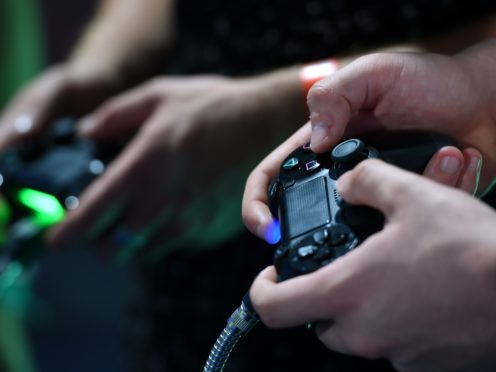
Young children who play video games are more likely to weigh more as teenagers, according to new research.
Scientists from universities in Leeds, London, Belfast and Stirling looked at the health and behaviour of more than 16,000 children in the UK at the ages of five, seven and 14.
They found that those who regularly played video games as young children had a higher body mass index (BMI) nine years later, compared to those who did not take part in gaming.
The researchers suggested behaviours associated with gaming – such as consumption of sugar-sweetened drinks and an irregular bedtime – may be partly responsible for causing the weight change and called for stricter advertising laws to protect young gamers from being encouraged to drink large quantities of unhealthy products.
They said steps could be taken by games developers and parents to minimise the risk of such weight gain.
The research – which was published on Monday in JAMA Paediatrics and funded by Cancer Research UK – is the first study to look at the potential effect of video game use on children’s BMI over time.
It was conducted by the University of Leeds, University College London, Queen’s University Belfast, University of Stirling and The Behaviouralist, London.
The study found children who played three hours or more of video games per day at the age of five had a BMI that was 0.085 higher aged 14 than those who did not take part in gaming, where a healthy range is between minus two and one.
The authors said this result meant the link between gaming and BMI was unlikely to be meaningful for heart health but could help to tackle childhood obesity.
Dr Rebecca Beeken, lead author from the University of Leeds’ School of Medicine, said: “This research shows a potential connection between gaming in young children and an increased chance of higher weight in later years.
“It also shows that consuming sugar-sweetened drinks and going to bed at irregular times may be partly responsible for the associated increased weight.”
The researchers said that, while there are restrictions on advertising sugar-sweetened drinks towards children on television, there are no equivalent laws for advertising through video games.
Dr Beeken said: “Stricter advertising laws are urgently needed to protect young gamers from being encouraged to drink large quantities of unhealthy products, which we know can have lasting health consequences.”
William Goodman, a PhD researcher at the University of Leeds, said there are steps that could be taken to minimise the risk of weight gain.
He said: “One option would be to encourage parents to use the inbuilt parental settings on gaming consoles to set time restrictions on how long children can play for.”
Karis Betts, Cancer Research UK’s health information manager, said: “Forming healthy habits is really important, but the world we live in doesn’t always make it easy, which is why we need to see measures put in place by the government to help reduce childhood obesity.”

Enjoy the convenience of having The Sunday Post delivered as a digital ePaper straight to your smartphone, tablet or computer.
Subscribe for only £5.49 a month and enjoy all the benefits of the printed paper as a digital replica.
Subscribe